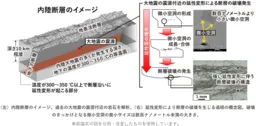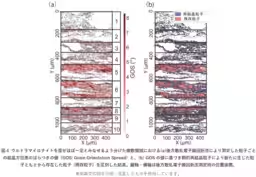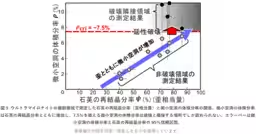

Understanding the Start of Fault Rupture Near Major Earthquake Epicenters in Japan
Understanding the Start of Fault Rupture Near Major Earthquake Epicenters in Japan
Recent research conducted by a team from the National Institute of Advanced Industrial Science and Technology (AIST) sheds light on the mechanisms behind fault ruptures associated with major inland earthquakes. This study, particularly focusing on the behavior of ductile deformation in rocks, unveils critical insights related to seismic activity and provides a foundation for potential advancements in earthquake prediction methods.
Key Discoveries
The team, led by senior researcher Norio Shigematsu and research assistant Thomas Yeo, collaborated with experts from The University of Tokyo and Tsukuba University. They reported findings from geological surveys and analysis conducted along the Central Structures Line in Mie Prefecture. This area is notable for having significant fault lines that manifest openly on the surface, correlating with historical major earthquake epicenters.
One of the critical observations reported was the relationship between strong ductile deformation in rocks and the formation of microscale cavities. This research indicates that the volume fraction of these cavities increases notably with the intensity of ductile deformation. When this volume fraction exceeds 7.5%, it indicates a threshold that precedes the occurrence of fault rupture underground.
Implications of the Research
The implications of this research extend towards enhancing the understanding and prediction capabilities related to the seismic behavior of inland earthquakes. Historically, major earthquakes in Japan have caused significant damage, making accurate prediction essential for societal safety. This research provides valuable insights that could transition existing long-term assessment methods to a more immediate and reliable short-term prediction framework.
The findings, published in the Journal of Geophysical Research: Solid Earth, underline the importance of studying the initial behaviors that lead to fault rupture. Understanding how ductile deformation leads to the formation and growth of microscale cavities may offer a predictive pathway similar to those applied in metals under stress.
Investigative Focus
The research specifically examined the composition of ultra-mylonite, a type of fine-grained rock prevalent in the study area, characterized by its crystal formation and structure. Through microscopic examinations using scanning electron microscopy (SEM) and transmission electron microscopy (TEM), the team was able to identify two types of microscale cavities within the rock matrix—empty cavities and those filled with minerals like chlorite. This level of detail emphasizes the complexities involved in the material behavior of rocks under geophysical conditions.
Research and Its Evolution
The study emerged from a broader initiative by AIST to focus on geological phenomena, specifically targeting earthquake prediction initiatives. As previous investigations revealed the significance of fault lines, this continued research emphasizes the impacts of ductile deformation as a precursor to seismic activity. The interdisciplinary collaboration was instrumental in enriching the research and its applications.
Further Research Directions
Continued investigations aim to explore the spatial distribution of these deformation phenomena and their contributions to fault dynamics comprehensively. As further studies unfold, it will be crucial to validate the presence of traces related to earthquake ruptures and their implications on fault systems as a whole.
In summary, the exploration of the connection between ductile deformation, microscale cavity formation, and the onset of fault rupture underscores the potential for future applications in seismic risk reduction and predictive technologies. This research not only enriches geological science but also serves essential societal needs by addressing critical earthquake prediction challenges.
Scientific Publication Details
- - Journal: Journal of Geophysical Research: Solid Earth
- - Title: Evolution of Nanocavities to Ductile Fractures in Crustal-Scale Faults at the Base of the Seismogenic Zone
- - Authors: Thomas Yeo, Norio Shigematsu, Simon R. Wallis, Keita Kobayashi, Chunjie Zhang, and Kohtaro Ujiie
- - DOI: 10.1029/2024JB029868
The findings represent a pivotal step in understanding the intricate geophysical processes underlying earthquake mechanisms and pave the way for improved predictive methodologies in the future.






Topics Environment)










【About Using Articles】
You can freely use the title and article content by linking to the page where the article is posted.
※ Images cannot be used.
【About Links】
Links are free to use.